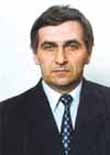
DISSIPATIVE STRUCTURES AND FRAGMENTATION AT MACRO- AND MEGA-SCALE LEVELS IN THE ROCKMASS END PART IN DEPTH



|
A.V.Shestopalov ( sinergo@mail.ru ) DISSIPATIVE STRUCTURES AND FRAGMENTATION AT MACRO- AND MEGA-SCALE LEVELS IN THE ROCKMASS END PART IN DEPTH |

|

|

|

|

|

|

|

|